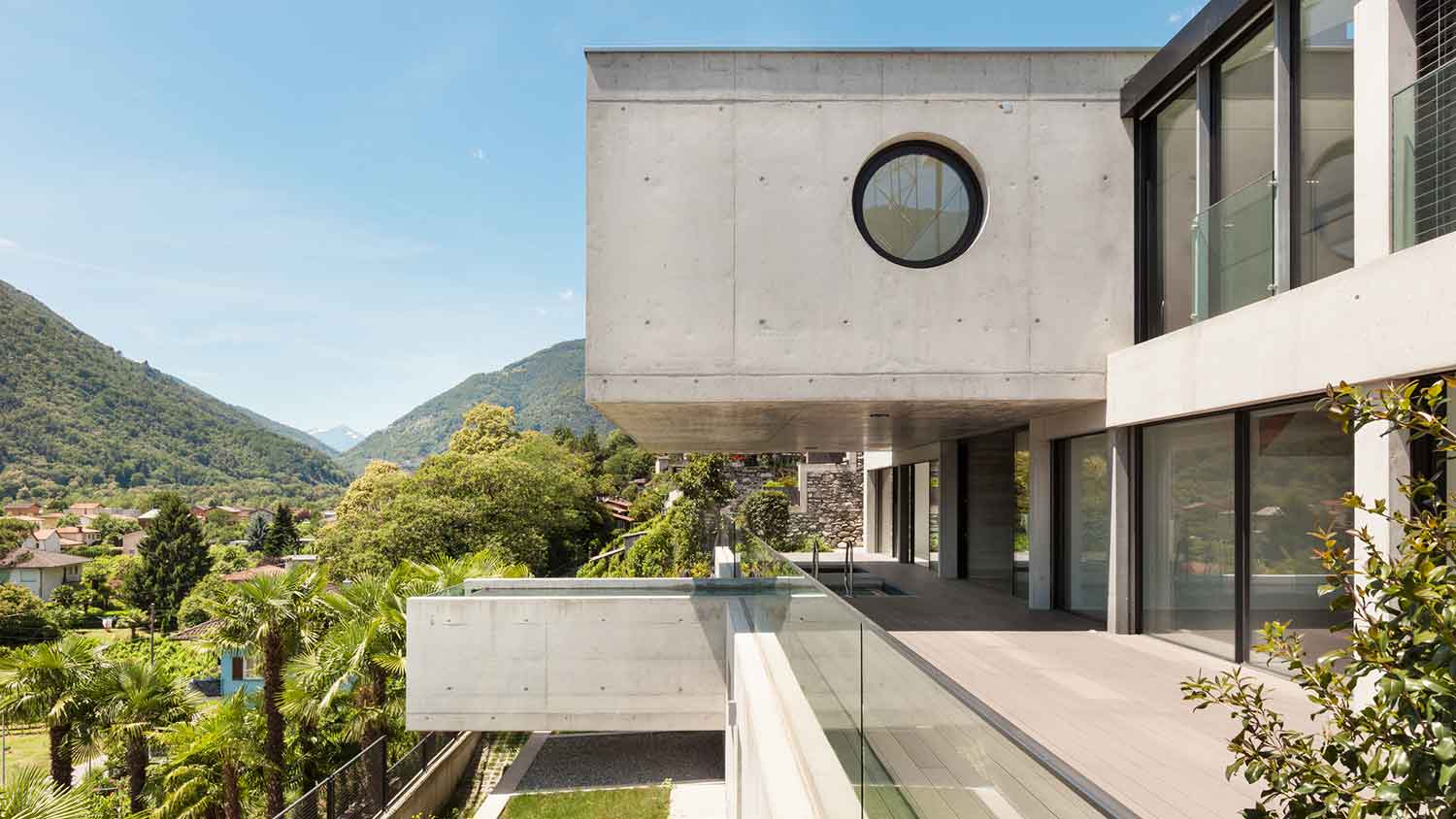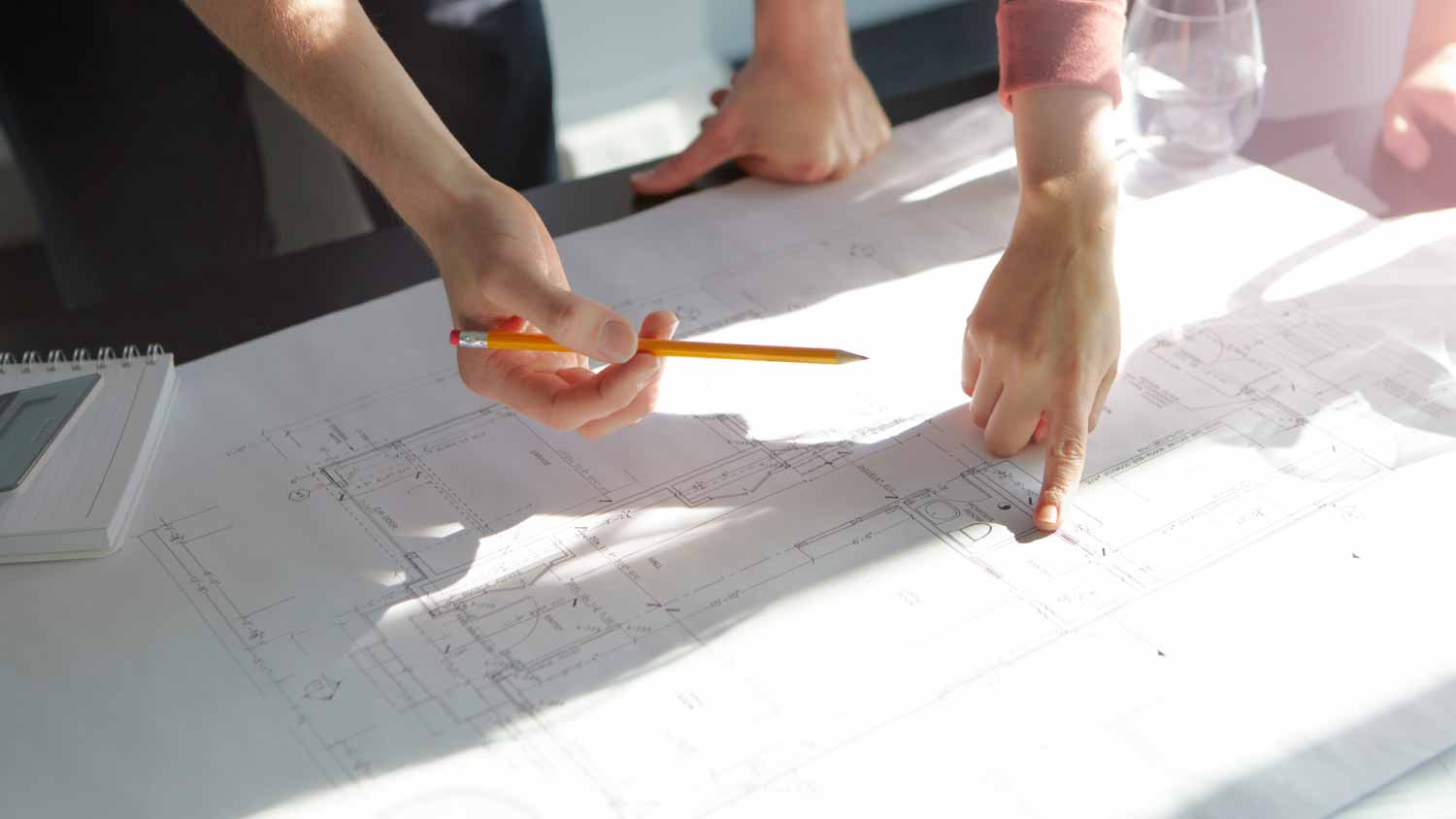
Few things elevate your outdoor space like a landscape architect can. Learn about how much a landscape architect costs and what affects your total.
There are some concrete reasons to like this style of architecture


Brutalist architecture features exposed concrete construction and simple geometric lines.
This design style was popular in the U.S. from the 1950s through the 1980s.
You can identify brutalist buildings by their blocky, modular look and lack of ornamentation.
Brutalist architecture, known for its simple lines, use of unadorned concrete, and lack of ornamentation, was a popular design style in the U.S. from the 1950s to the 1980s. This style was used to construct commercial buildings, multi-unit housing, and other large-scale construction, but it can also be found in homes across the country. Modern brutalism combines raw concrete construction with contemporary design highlights to update the look of this enduring architectural style.
Brutalist architecture is a minimalist design style that produces imposing buildings that highlight raw materials and functional lines rather than ornamentation and design flourishes. Brutalist architects seek to showcase the “honesty” of their designs and prioritize function and simplicity over aesthetics. Brutalist architecture is also known for its modular, geometric shape and monochromatic color palette.
Brutalist architecture features concrete, which is used to construct sturdy geometric shapes without complex construction or ornate features. The use of concrete also makes brutalist architecture lower cost to build, so this style is often found in commercial buildings, academic settings, and multi-unit housing, allowing large, cost-effective structures to be built relatively quickly due to the lack of bells and whistles.
While gothic-style architecture is associated with the mid-1800s in the U.S., colonial revival style architecture spans the late 1800s into the mid-1900s, and prairie-style architecture calls to mind the early 1900s, brutalist architecture came to popularity in the U.S. in the late 1950s and into the 1960s, falling out of style in the 1980s. This style developed post-World War II in Europe and made its way to the U.S. within a few years.
During the postwar era, building materials were scarce, which made buildings constructed from easy-to-obtain concrete an appealing option. Brutalist buildings were simple and efficient to build, allowing quick construction without extra time spent on intricate design details. Brutalism fell out of popularity in the 1980s as popular tastes changed back to more elaborate designs.
While brutalist architecture is cost-effective and efficient to construct, it’s often criticized for looking cold, imposing, and industrial. Brutalist design in residential homes is often softened with other design styles for a warmer and more hospitable feel while keeping the key elements of brutalism intact. Aging brutalist buildings are difficult to renovate and prone to water damage and crumbling concrete, so if your house was built during this period using brutalist design, repair and upkeep can be an expensive, involved process.

Brutalist architecture’s distinct look is due to a few key elements that are the hallmarks of this imposing style. You can identify brutalist architecture by these design characteristics:
Exposed concrete construction
Simple, clean geometric lines
Raw, unfinished surfaces
Blocky, modular look
Monochromatic color palette
Small windows without elaborate framing
Lack of ornamentation or decorative flourishes
Hidden or indirect lighting
Modern brutalist architecture may also incorporate other raw materials like steel, glass, and stone, keeping the same simple geometric lines the style is known for.
If your dream is to live in a brutalist home, hire an architect with experience in this style to make your concrete dreams a reality. A local architect who specializes in brutalism can either remain fully faithful to the style or incorporate elements of it into your home design. The cost to hire an architect is well worth it to ensure your brutalist-style home will endure for decades to come.
If you want to incorporate brutalist design into your existing home, choose these design and decor options:
Use concrete decor options or use concrete or concrete-textured paint or tiles for flooring or wall material.
Keep decorative flourishes to a minimum. Brutalism is known for its minimalist design, so the less you have on display, the better.
Embrace the raw texture of your building materials. Although brutalism is known for concrete, raw steel, wood, glass, and other materials can also contribute to a brutalist feel.
Decorate with a monochromatic neutral color palette.
Use bold, geometric shapes for furniture and decor.
From average costs to expert advice, get all the answers you need to get your job done.

Few things elevate your outdoor space like a landscape architect can. Learn about how much a landscape architect costs and what affects your total.

Wondering how much hiring an architect cost? Discover architect prices, cost factors, and money-saving tips to help you plan your home project with confidence.

Get transparent draftsperson cost to hire info, including average prices, cost factors, and tips to help homeowners budget and save on drafting services.

Floor plans can help you visualize a space and are useful in home construction and design. Learn how much a floor plan costs and what affects the price.

It’s uncommon for people to have their home’s blueprints sitting in a drawer, but you might need them. If you do, here’s how to get blueprints of your house.

Learn about Renaissance-style architecture, including what defines the form and how to incorporate the crucial elements of style and design into your home.